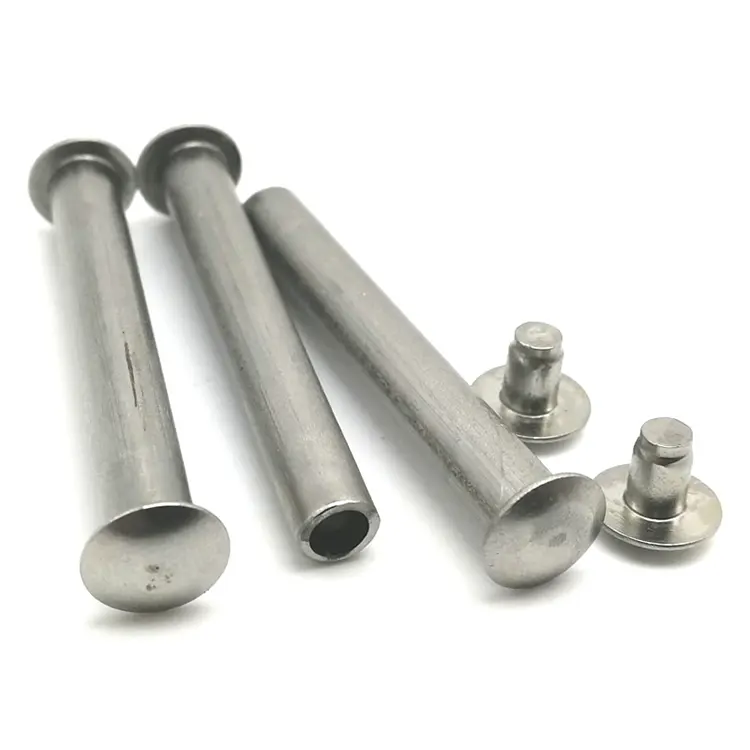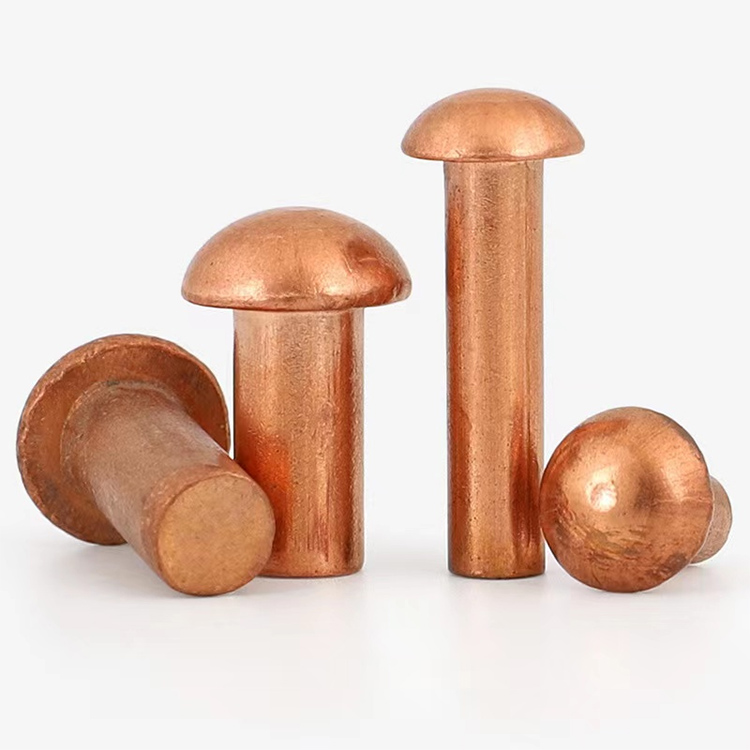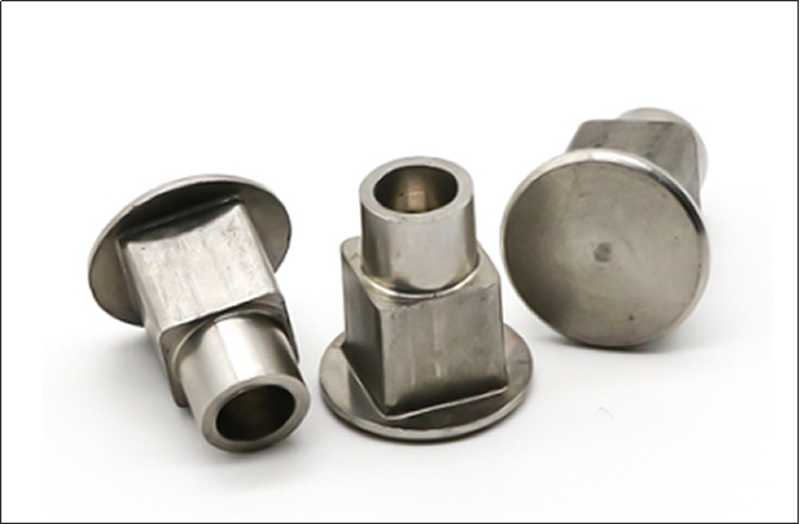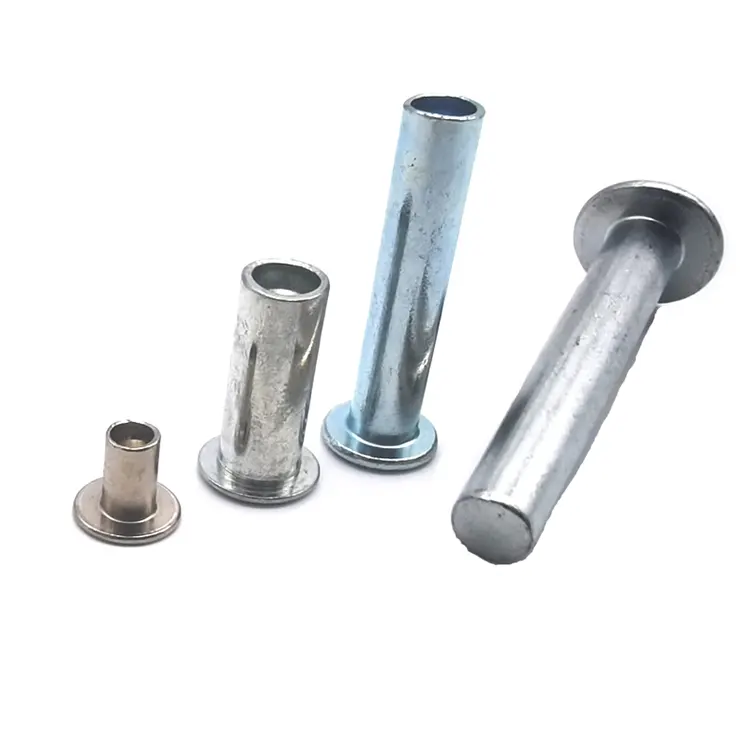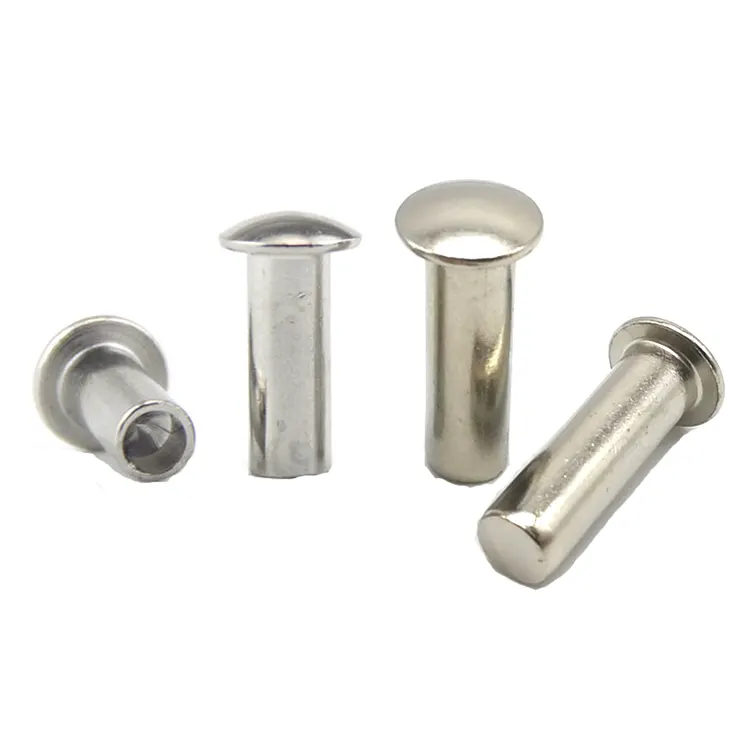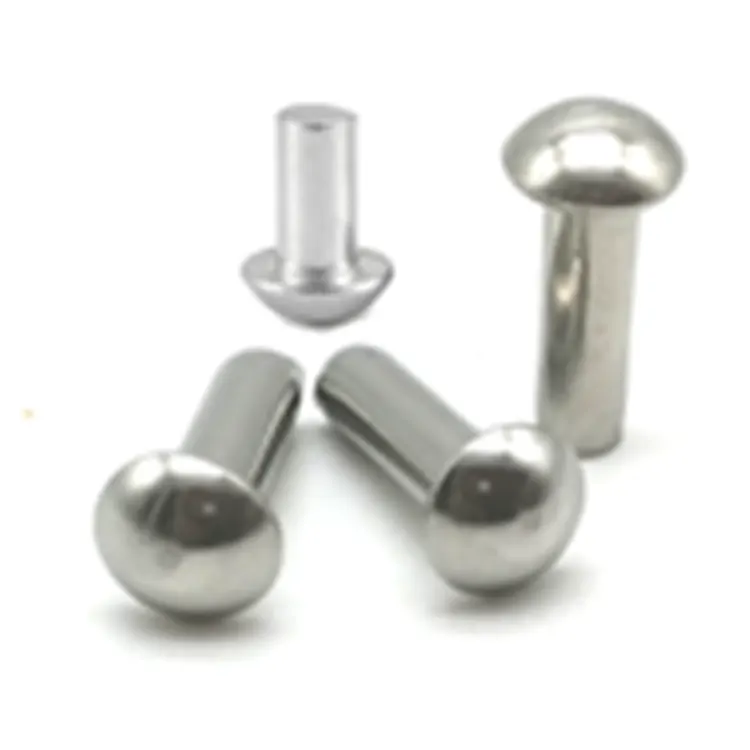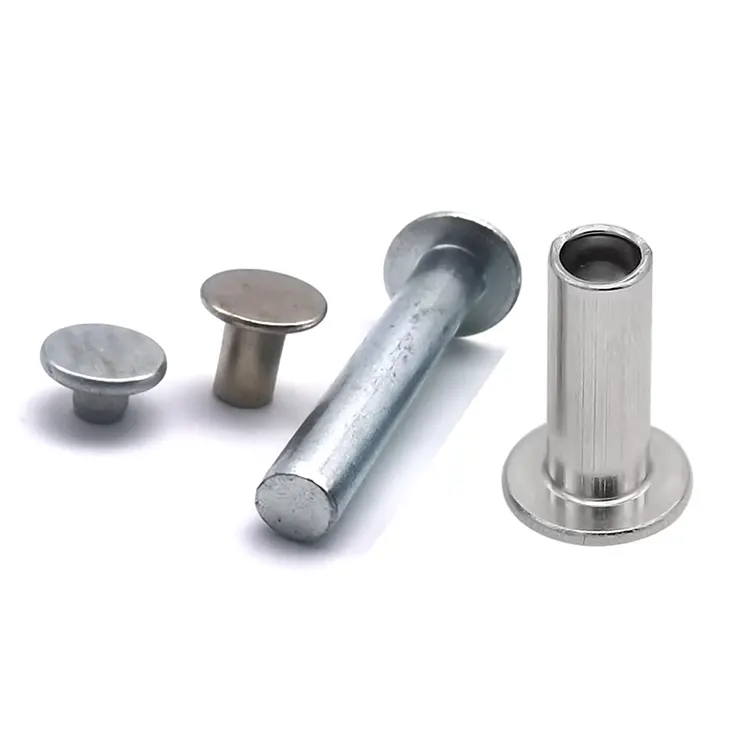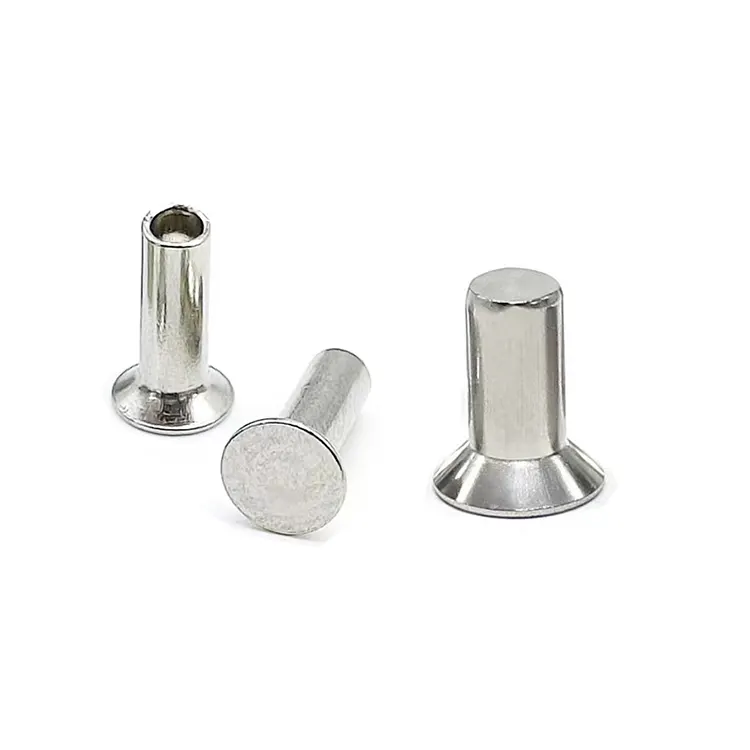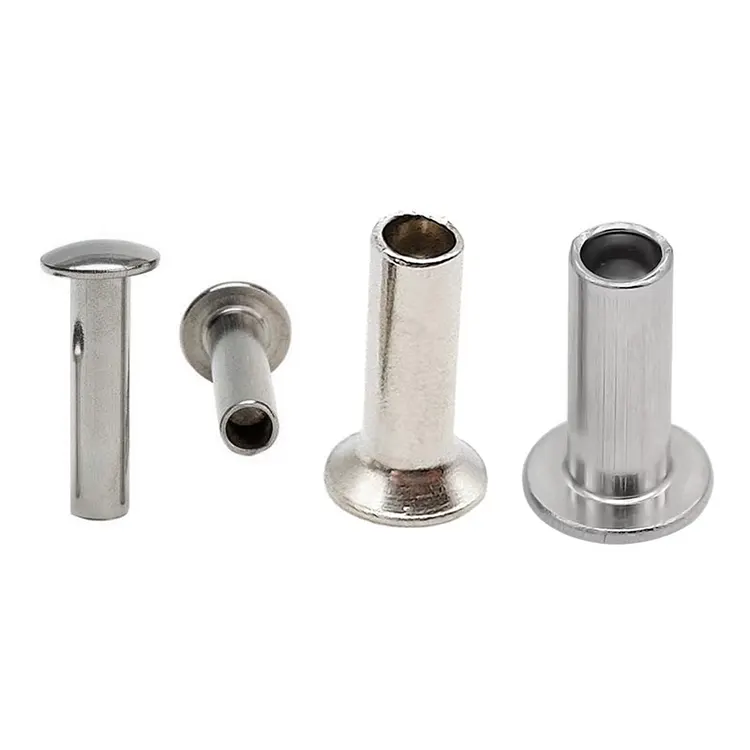Rebites especiais
One of Chinese manufacturer of Special Rivets, offering excellent quality at a competitive price, is Notin. Feel free to get in touch.
In the field of mechanical manufacturing and assembly, rivets are a common fastener used to professionally connect two or more parts. According to the degree of standardization, rivets can be divided into two categories: standard rivets and non-standard rivets. The size, shape and material of standard rivets are uniformly specified, while non-standard rivets are customized according to specific needs. The following will introduce the characteristics and applications of non-standard rivets from multiple aspects.
What are non-standard rivets?
Non-standard rivets are also called special rivets. They refer to rivets that do not meet national standards or industry general standards. Their size, material, structure and other parameters are designed and manufactured according to the specific needs of customers. Due to the different connection requirements of different industries and equipment, standard rivets may not meet the requirements of certain special scenarios, so non-standard rivets came into being.
What are the characteristics of special rivets?
(1) Strong customization: Non-standard rivets can be personalized according to factors such as the use environment, stress conditions, and assembly methods to ensure that they perform well in actual applications.
(2) Diverse materials: In addition to common carbon steel and stainless steel, non-standard rivets can also be made of special materials such as aluminum alloy, copper alloy, titanium alloy, etc. to meet different corrosion resistance, strength and weight requirements.
(3) Flexible structure: The structure of non-standard rivets can be adjusted according to needs, such as head shape, stem diameter, length, etc., and can even be designed to be hollow, semi-hollow or other special shapes.
- View as
Rebites de Ferro
Rebites de ferro, também conhecidos comorebites de aço carbono, são um tipo de fixador normalmente feito de aço carbono com tratamentos de superfície como galvanização. Eles oferecem uma resistência à tração de 400-500 MPa e são adequados para aplicações como equipamentos elétricos. Para acomodar várias aplicações de rebitagem, os rebites de ferro são normalmente fabricados como rebites semi-ocos ou sólidos. Os rebites de ferro são um componente mecânico fundamental, porém crucial, amplamente utilizado por sua resistência, preço acessível e facilidade de uso.
consulte Mais informaçãoEnviar consultaRebites de cabeça de panela de ferro
Os rebites de cabeça panela de ferro, com suas características leves, resistentes à corrosão e esteticamente agradáveis, tornaram-se versáteis e versáteis na fabricação industrial. Seja em aplicações de peso crítico ou na vida cotidiana, os rebites de cabeça cilíndrica de ferro oferecem desempenho e confiabilidade excepcionais. Bem-vindo à Nuote Metals em Dongguan, China, especialista nestes rebites. Oferecemos produtos de alta qualidade com entrega garantida. Também fabricamos outros acessórios de hardware, como ilhós, peças usinadas e peças estampadas.
consulte Mais informaçãoEnviar consultaRebites de cabeça de cogumelo de ferro
Nuote Metals é um fabricante profissional de rebites localizado em Dongguan, China. Nossos rebites de ferro com cabeça de cogumelo, como o nome sugere, apresentam uma cabeça em forma de cogumelo com núcleo semi-oco ou sólido. A cabeça é normalmente maior, proporcionando uma boa superfície de apoio. Esta estrutura permite a deformação durante a instalação, seja por extrusão ou ferramental especializado, para conectar com segurança dois ou mais materiais. Feitos de ferro, são normalmente galvanizados ou tratados com outros acabamentos para resistência à corrosão.
consulte Mais informaçãoEnviar consultaRebites de cabeça chata de ferro
Como um conector mecânico comum, os rebites de cabeça plana de ferro ocupam uma posição importante em vários campos industriais devido às suas características de design e ampla gama de aplicações. Estruturalmente, a cabeça do rebite é plana, em forma de disco e o corpo é cilíndrico. A extremidade é especialmente processada para formar uma estrutura perturbada. Após a instalação, a pressão ou o impacto fazem com que o corpo se expanda, formando um engate mecânico com a parede do furo para obter um efeito de aperto. Comparado aos rebites de cabeça redonda ou rebites de cabeça escareada, o design de cabeça plana tem vantagens significativas na distribuição de força e na área de contato. Por exemplo, quando sujeito a força de cisalhamento, sua cabeça em forma de disco pode dispersar a carga para uma área maior, reduzindo efetivamente a pressão por unidade de área.
consulte Mais informaçãoEnviar consultaRebites de cabeça escareada de ferro
A cabeça de um rebite de cabeça escareada de ferro tem o formato de um cone truncado, com o cone normalmente inclinado em 90° ou 120° em relação ao eixo do rebite. Este formato permite que a cabeça do rebite fique nivelada com a superfície do componente conectado após a instalação, resultando em uma aparência lisa. Isto é particularmente adequado para aplicações onde o nivelamento da superfície é crítico. Venha para a Nuote Metals para personalizar o rebite de cabeça escareada de ferro desejado. Nossos engenheiros, com mais de 10 anos de experiência, estão profundamente familiarizados com a produção de diversos tipos de rebites.
consulte Mais informaçãoEnviar consultaRebites Meio Tubulares
Um rebite meio tubular é um fixador de metal sólido em uma extremidade e parcialmente oco na outra, geralmente feito de materiais como liga de alumínio, cobre ou aço. A porção oca ocupa aproximadamente um terço a metade do comprimento do corpo do rebite. Este design permite que o rebite obtenha um efeito de fixação através da deformação por extrusão durante a instalação. Comparado comrebites sólidos, os rebites meio tubulares são caracterizados por peso leve, fácil instalação e ampla aplicabilidade; em comparação com os rebites totalmente ocos, eles proporcionam maior resistência e estabilidade. Os rebites meio tubulares não requerem equipamentos complexos durante a instalação e geralmente podem ser completados com ferramentas manuais ou pneumáticas. Portanto, eles são favorecidos em muitos campos. A Nuote Metals é especializada na produção de rebites meio tubulares, com linha completa de moldes e aceita customização.
consulte Mais informaçãoEnviar consultaWhat are the characteristics of special rivets?
(1) Strong customization: Non-standard rivets can be personalized according to factors such as the use environment, stress conditions, and assembly methods to ensure that they perform well in actual applications.
(2) Diverse materials: In addition to common carbon steel and stainless steel, non-standard rivets can also be made of special materials such as aluminum alloy, copper alloy, titanium alloy, etc. to meet different corrosion resistance, strength and weight requirements.
(3) Flexible structure: The structure of non-standard rivets can be adjusted according to needs, such as head shape, stem diameter, length, etc., and can even be designed to be hollow, semi-hollow or other special shapes.
Manufacturing process of special rivets
The manufacturing of non-standard rivets involves multiple links, mainly including:
1.Material selection: Select suitable metal or alloy materials according to the use environment. 2. 2.Cold heading or hot heading: Use pressure processing to form the basic shape of the rivet into the metal blank.
3.Turning or milling: Fine-process the details such as the head and stem of the rivet to ensure dimensional accuracy.
4.Surface treatment: Such as galvanizing, nickel plating, anodizing, etc. to improve corrosion resistance or aesthetics.
Advantages and limitations of special rivets
(1) Advantages: They can meet special needs, improve assembly efficiency and connection reliability, and are suitable for complex or high-demand application scenarios.
(2) Limitations: Since they are customized products, the production cost is high, the delivery cycle is relatively long, and customers are required to provide detailed technical parameters.
How to choose suitable special rivets?
(1) Clarify the needs: Determine the key parameters such as the rivet's operating environment, stress conditions, and corrosion resistance requirements.
(2) Material matching: Select the appropriate material based on actual needs to avoid over-design that leads to increased costs.
(3) Communicate with suppliers: Provide detailed technical drawings or samples to ensure that the non-standard rivets produced meet expectations.
What are the main applications of special rivets?
(1) Aerospace: Aircraft, rockets and other equipment have extremely high requirements for the weight, strength and high-temperature resistance of fasteners. Non-standard rivets can be optimized according to specific needs.
(2) Automobile manufacturing: Certain special models or high-performance vehicles may require non-standard rivets to meet the needs of lightweight or high-strength connections.
(3) Electronic equipment: Precision instruments or small electronic equipment may require micro non-standard rivets to ensure the stability and compactness of the connection.
(4) Construction industry: Some special-structured buildings or decoration projects may use non-standard rivets to meet specific installation requirements.
Market status of special rivets
With the advancement of industrial technology, more and more industries have begun to use non-standard rivets to optimize product design. At present, non-standard rivet manufacturers are mainly concentrated in the Yangtze River Delta and Pearl River Delta regions in China, and can provide a variety of customized services. Due to the high unit price of non-standard rivets, its market size is relatively small, but the demand in the high-end manufacturing field continues to grow.
Future development trends
(1) Lightweight design: With the improvement of energy-saving and environmental protection requirements, non-standard rivets made of lightweight materials will be more popular.
(2) Intelligent production: Automated equipment and digital management will further improve the production efficiency and quality stability of non-standard rivets.
(3) Wider application: Emerging industries such as new energy and robotics may drive the growth of demand for non-standard rivets.
In summary, special rivets are highly customized fasteners that can meet special needs that standard rivets cannot meet. Although its production cost is relatively high, it plays an irreplaceable role in industries such as aerospace, automobiles, and electronics. In the future, with the advancement of manufacturing technology, the application scope of non-standard rivets is expected to further expand.

